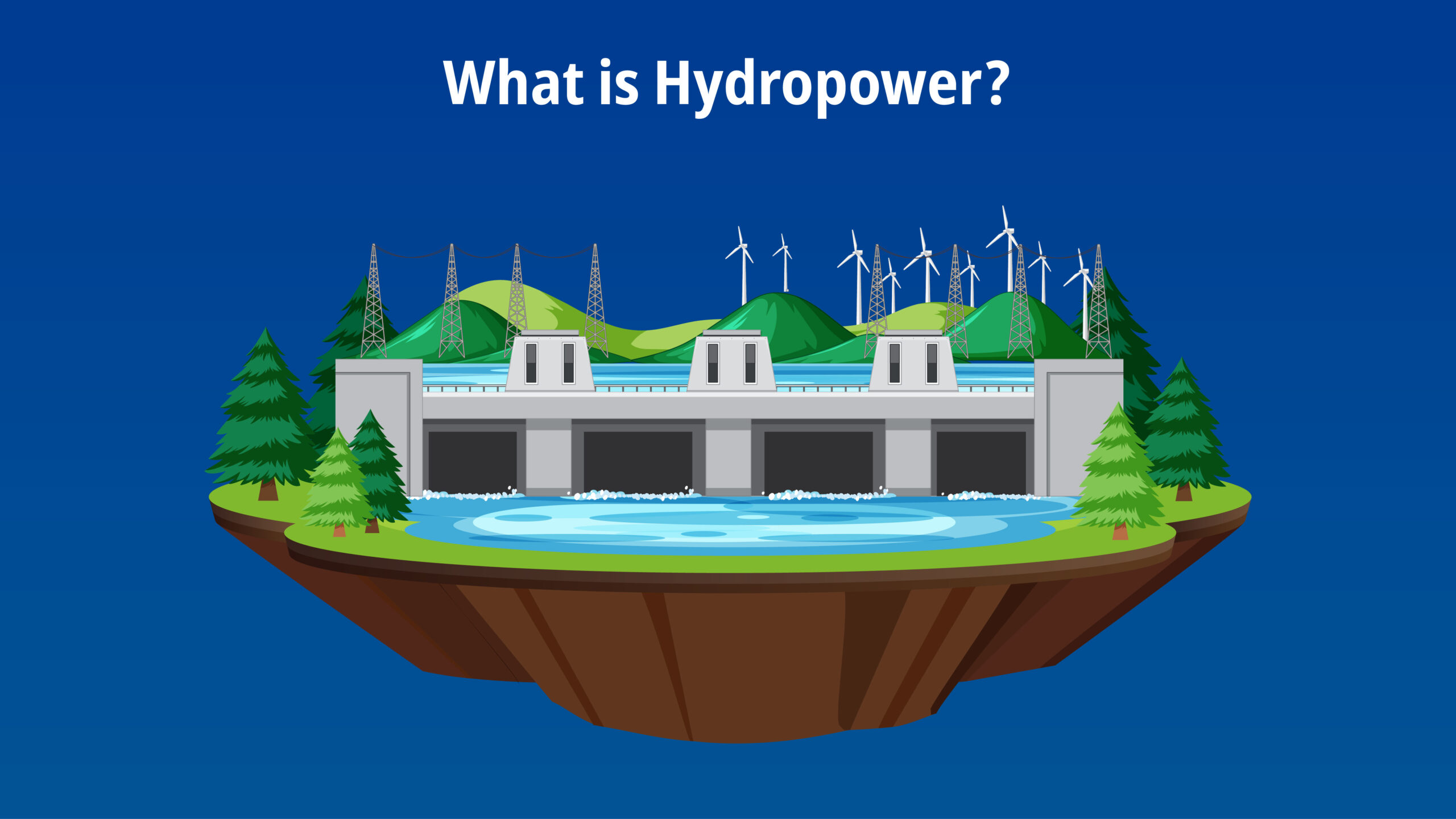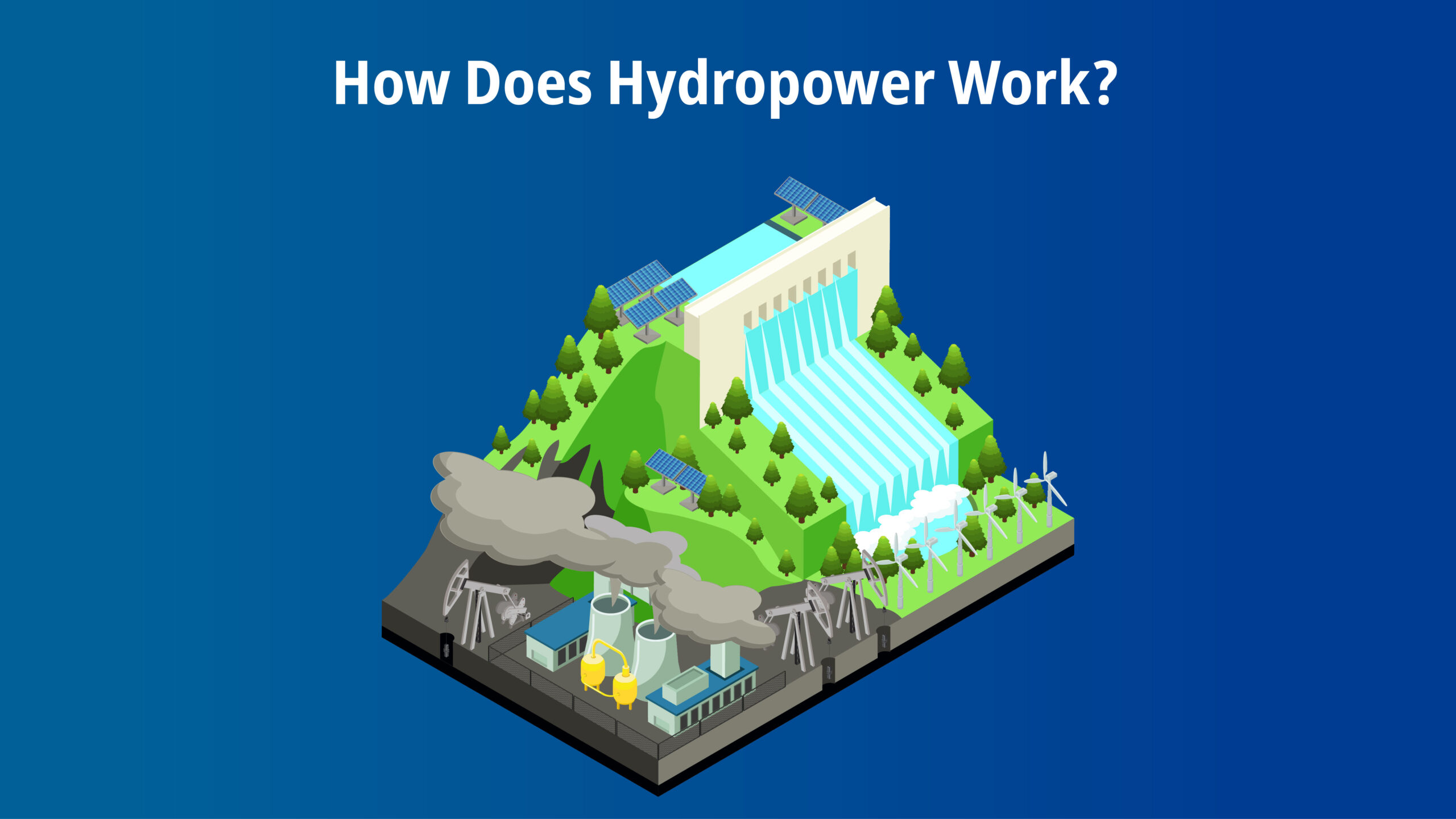Imagine chilling by a waterfall, water gushing over rocks, and a refreshing mist showering you. Now, that’s not just beautiful but powerful too. The flowing water holds a ton of energy, and guess what? We can tap into that energy using hydroelectric power, or simply put, hydropower. It’s like magic—channeling the water through turbines to turn its energy into electricity that lights up our homes and factories.
Let’s dive into the world of hydroelectric power, unlocking its several aspects in this ultimate guide.
What is Hydropower?

Hydropower is a method of harnessing kinetic energy present in various forms of moving water, such as rivers, released water from elevated reservoirs, or the ebb and flow of tides. This energy is then converted into electrical power through a hydroelectric power plant and distributed into the electricity grid.
Throughout history, the utilization of flowing water as a renewable energy source has been well-established. The ancient Greeks, over two millennia ago, employed waterwheels to efficiently grind grains. Notably, in 1878, a significant milestone was achieved with the construction of the first hydroelectric generator in England, capable of providing sufficient power to illuminate a single lamp. The 2022 Hydropower Status Report by the International Hydropower Association indicates a significant increase in global installed hydropower capacity, reaching 1360 GW with a boost of 26 GW in 2021.
How Does Hydropower Work?

Hydroelectric power utilizes the movement of water to spin turbines and produce electricity, regardless of the specific mechanism employed by each hydropower source. This renewable energy source harnesses the power of flowing water to generate electricity efficiently.
The water cycle is the main engine underlying the majority of hydroelectric power applications. When water evaporates from lakes, rivers, and seas, it condenses in the atmosphere and then returns to the surface of the earth as precipitation, which travels via rivers and streams. By turning turbines, the energy contained in this moving water can be used to create hydroelectricity. Water is typically fed into a hydroelectric plant through a conduit called a penstock, which directs the water flow towards turbines. The turbines are forced to spin by the water’s flow, creating usable electricity.
Tidal power and wave energy offer alternative ways to generate hydroelectric power without being dependent on the water cycle. Tidal power is derived from the gravitational force of the moon, while wave energy is harnessed from the wind blowing across the ocean’s surface.
Advantages of Hydropower
Hydroelectric power offers numerous benefits in terms of electricity generation, particularly when compared to traditional fossil fuels. Hydroelectric power is
Renewable. Hydroelectric power is an everlasting source of energy, unlike fossil fuels. It is available in abundance and will never be depleted. Globally, hydropower stands as the predominant renewable energy source, contributing to over 70% of the total renewable energy production. In the United States, it plays a significant role, generating more than 30% of the country’s renewable energy and approximately 6% of the overall energy supply. Hydroelectric power plants are widespread, with nearly every state in the U.S. hosting at least one such facility.
Clean. Utilizing a river for hydroelectric power doesn’t contaminate or deplete the water source. Although hydroelectric power does emit some greenhouse gasses, it typically boasts cleaner credentials compared to most fossil fuels.
Efficient. Hydroelectric power facilities at their peak can transform more than 90% of the stored water energy into electricity. In comparison, the most efficient fossil fuel plants can only harness around 60% of the energy present in the fuel.
Continuous. Hydroelectric power plants can generate electricity continuously, unlike wind and solar power sources that are dependent on specific weather conditions. This constant availability of power gives hydroelectric power plants an edge over wind and solar energy systems.
Flexible. Hydroelectric power plants can rapidly adapt their power output to align with fluctuations in electricity demand.
Locally produced. Countries utilizing hydroelectric power can reduce dependence on imported fuels from other nations.
Disadvantages of Hydropower
Despite the numerous advantages, hydroelectric power has several significant disadvantages when compared to alternative sources of renewable energy. These drawbacks are as follows:
High up-front cost. The construction of hydroelectric power infrastructure is costly and time-consuming.
Middling affordability. While hydroelectric power is less expensive than many of the current electricity sources, it is still not as inexpensive as geothermal, solar, or onshore wind energy.
Limited locations. A source of flowing water must be located close to major types of hydroelectric power plants. Although a water source is not necessary for closed-loop pumped storage, the two reservoirs must be at different elevations for it to work.
Dependence on rainfall. Hydroelectric power is a dependable energy source most of the time. However, during a drought, rivers lose water, which also causes hydroelectric power plants to produce less energy.
Environmental costs. Wildlife in and around rivers can be harmed by dams. Along with their construction, hydro plants release certain greenhouse gasses during the decomposition of plant matter.
Wrapping it Up
The journey through the cascading world of hydropower energy unveils a tale of both promise and challenges. The advantages of hydropower, from its renewable nature to its contribution to clean energy, stand as beacons of a sustainable future. Yet, this technology is not free from complexities, as the disadvantages of hydropower, such as environmental impacts and the alteration of ecosystems, remind us of the delicate balance we must strike when harnessing nature’s power.
Hydroelectric power with its potential to shape our energy future, prompts us to explore innovative solutions that harmonize progress with environmental stewardship, striving for a world where clean, renewable energy is a driving force for a resilient and sustainable tomorrow.




